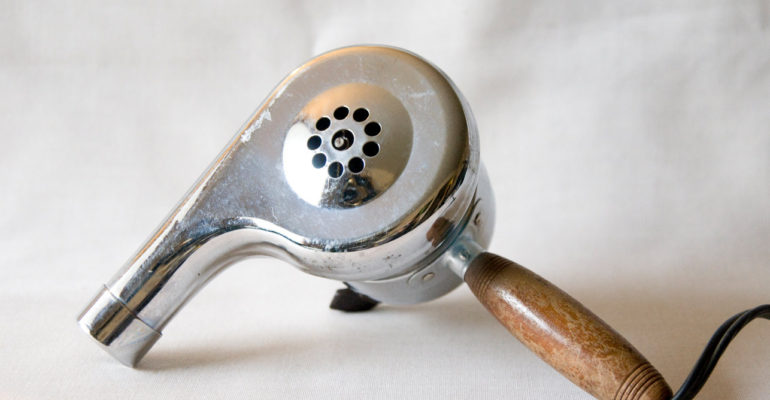Before the invention of hair dryers, women and men would often attach hoses to the exhaust ends of vacuum cleaners to blow-dry their hair.
Blow Dryers were invented around the end of the 19th century. The first model was created by Alexander F. “Beau” Godefroy in France in 1890, he creates in his salon a seat with a hood connected to a gas stove.
A client would sit underneath the hood while a hand crank blew hot air from the stove over her hair. The handheld, household hair-dryer first appeared in 1920.
Blow Dryers are used both in the beauty salon by professional stylists, and in the average household by consumers. Godefroy hair hood dryer was widely copied and iterated upon, and became a staple of hair salons.
Variants included features such as articulable nozzles and heated coils in lieu of a single helmet. The first patent for a handheld hair dryer was granted in 1911.
Early portable dryers had a few problems, though — they were heavy, produced air barely warmer than room temperature, and had an irritating habit of electrocuting users.
Salon hair dryers remained the best option until the 1970s, when handheld dryers had advanced in aesthetics, power and safety enough to be a viable alternative.
In terms of modern models, a survey of stores in 2007 showed that most hair dryers have ceramic heating elements (like ceramic heaters)—because of their “instant heat” capability.
This means that it takes less time for the dryers to heat up, so it takes a lot less time for the hair to dry.
Many of these dryers have “cool shot” buttons which turn off the heater and just blow room temperature air while the button is pressed. This function is useful in helping to maintain the hairstyle by setting it. The cold air also reduces frizz and can help to bolster the shine in the hair.
Many also feature “ionic” operation, to reduce the amount of static electricity build-up in the hair. Manufacturers also claim this makes the hair “smoother.” Some stylists today consider the introduction of ionic technology to be one of the most important advances in the beauty industry.

